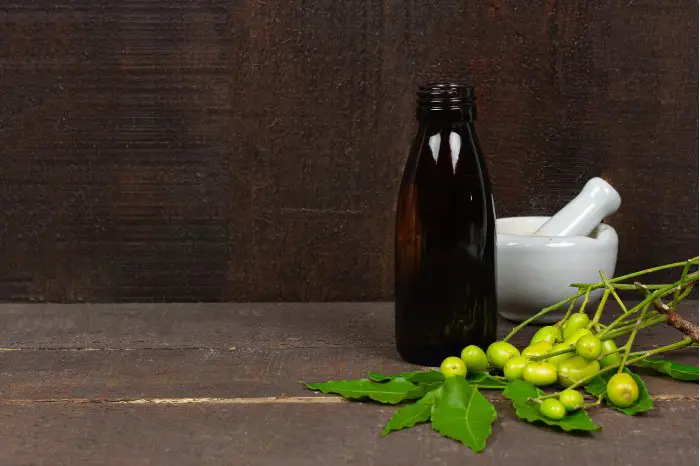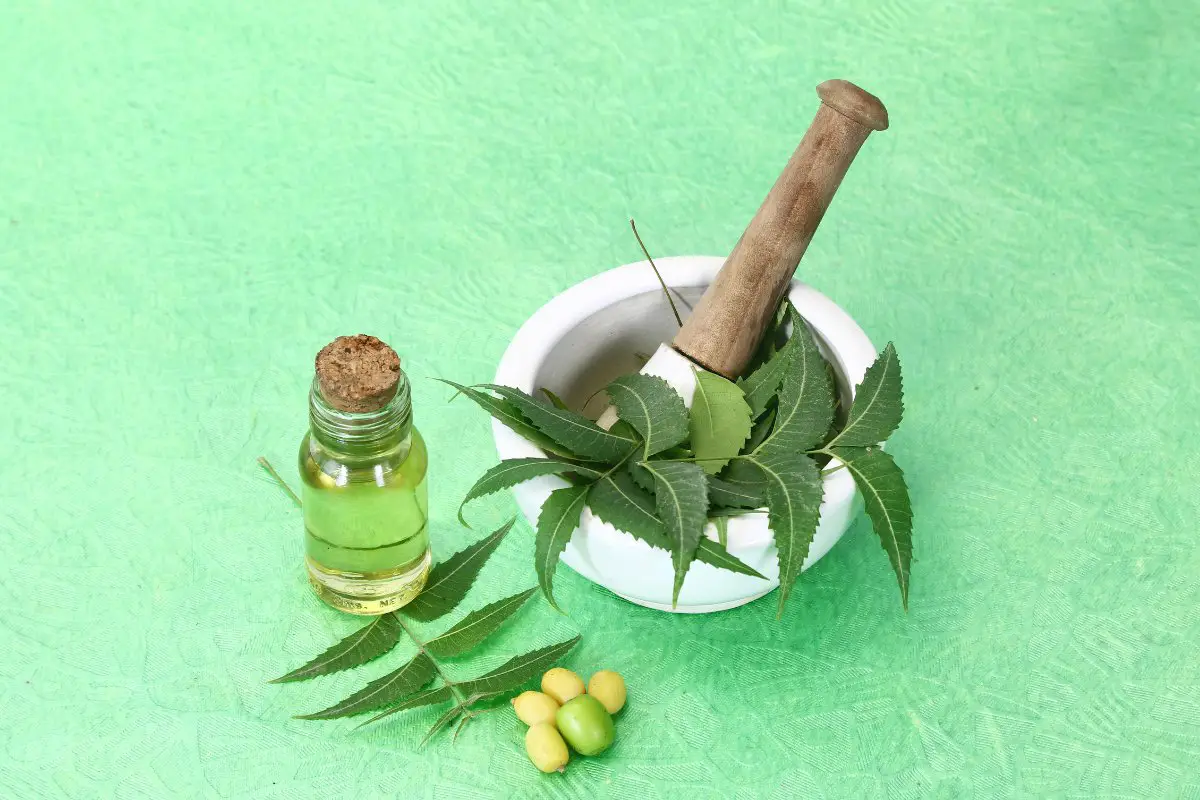Last Updated on December 30, 2022 by Cristina
Spraying pesticides on your houseplants is counterproductive as this introduces poisons into your home. Neem oil for house plants is a relatively safe alternative as it is not so much a pesticide as a growth inhibitor based on a natural plant extract. Read on to find out how neem oil for house plants can be used.
What Is Neem Oil?
Neem oil is the oil extracted from seeds of the neem tree – Azadirachta indica. It contains the active compound Azadirachtin, which is a complex terpene (tetraterpinoid). This specific compound acts to reduce the rate of feeding of many insect pests.
Neem oil contains many compounds and observations suggest it inhibits feeding and also inhibits molting – in other words, the insect cannot get bigger because it stays stuck in the skin it would wish to grow out of for a larger skin. Neem oil has quite low toxicity on rats – a good indication it is not toxic to us either. This does not mean it is not poisonous to us, just that you need a lot of it to kill you.

Something that is really important is that neem oil is non-toxic to bees. This means that if you have house plants on balconies that attract pollinators, you do not need to worry about killing these special insects. The reason for this is simple – bees are mature insects, and they will not molt again in their lives, hence the neem oil has no effect on them.
You Might Want to Read these Related Articles:
- Neem Oil Vs Insecticidal Soap – Which Is Better?
- Is Neem Oil Safe To Eat? Make Your Food Organic – And Safe!
How To Use Neem Oil On Houseplants?
When it comes to understanding how to use neem oil for house plants, we need to understand what we are trying to do. Neem oil for house plants is a contact growth inhibitor for many insects, and mite pests.
When you spray it, you will need a neem oil formulation that can form a relatively fine mist that can be sprayed on the tops and bottoms of leaves. Many pests such as mites, aphids, and whiteflies often hide under leaves – this is why misting the underside of leaves is important.
How Often To Use Neem Oil On Houseplants?
Neem oil degrades quite quickly in sunlight – depending on the intensity of the light it will degrade in a few hours to days. After this, the neem oil will have no real effect. Insects also have a lifecycle that you intend to disrupt. If you apply neem oil every day, this is overkill – I normally apply weekly until the problem abates. Some people recommend every ten days. Indoor plants are not exposed to rain in general and tend to be exposed to lower light intensity than outdoor plants. When I use neem oil outdoors I consequently use it every four days initially, and then every ten days to mop up problems.
Neem Bliss – Pure Neem Seed Oil Concentrate for Plants & Gardens
Neem Oil Spray For Indoor Plants
There is little difference really in the formulations I use. You basically want a spray that can wet the underside and top side of your plant leaves. For indoor use you tend not to need as much spray as you would use for outdoor use, hence a product is adequate.
What Is The Best Neem Oil For Houseplants?
We find with many things that one person’s favorite thing works for them, but not for another person. I tend to like a formulated product for indoor use, as my indoor plants are quite expensive and I cannot afford to lose them. You can make your own neem oil mixes – I have however found that these seem to never quite form the right drop sizes when you spray them from a hand sprayer, and I have to use a garden sprayer such as this that in turn is a pain to clean afterward.
Formulated products tend to have a whole lot of other ingredients, such as wetting agents, anti-surfactants, and similar types of additives added to increase the efficacy of the neem oil. What this means is that they form very fine drops that will tend to effortlessly be absorbed by the target insects. I have found my own mixes were particularly bad at penetrating the fibrous webs that spider mites make – the shop-bought premixed neem sprays tended to work better for this.
If you want to mix your own neem oil for house plants you can buy a good quality neem oil such as this one. Add one and a half teaspoons of neem oil per gallon of water. Add a teaspoon of dishwashing soap and I like to add a teaspoon of mineral oil. Shake this up and it becomes a white emulsion that I like to use a sprayer such as this to apply.
When you are finished spraying, drain all the liquid out of the sprayer and put it in a glass bottle for future use. Wrap the bottle in tin foil (sunlight kills the active ingredients in neem oil). Mix a little soapy water and blow that through the sprayer. Something about neem oil tends to react with the rubber parts of your sprayer and if you leave it in there the sprayer will just stop working after a few months.
In Conclusion – Neem Oil For House Plants
I hope this article has helped you understand how neem oil for house plants works. As you can see, if you have a few plants, buying a premixed preparation will probably be better. If you have 10 or more plants to treat, mixing your own neem oil will work and probably be more cost-effective.
I generally find that neem oil is one of my go-to treatments for indoor plants because it is not very toxic to humans. I don’t tend to eat my house plants, so in this regard, it poses no threat to me at all. For pets, if they do decide to gnaw at a plant, there is no risk to your pet either.
Dr. Garth A. Cambray is a Canadian/South African entrepreneur and beekeeper with 28 years of experience in apiculture and specializes in adding value to honey. His Ph.D. research developed a new advanced continuous fermentation method for making mead that has resulted in a number of companies globally being able to access markets for mead. His company, Makana Meadery, exports honey mead to the USA where it is available to discerning connoisseurs. He has also developed technologies to commercially manufacture organic honey vinegar in Zambia for export globally. He holds a few patents globally in the ethanol industry and believes in technology and knowledge transfer for human development and environmental sustainability. One of his proudest achievements is the fact that the wind farm he started at one of his old apiary sites has essentially made his hometown carbon neutral.



